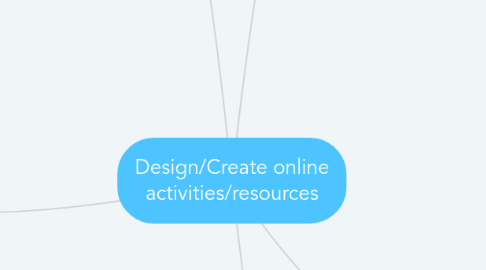
1. Key workers
1.1. Elearning heroes (Storyline)
1.1.1. Powerpoint for elearning
1.2. Cathy Moore
1.3. Ruth Clark and Richard Mayer
1.4. Anna Sabramowicz, scenario-based training
1.5. Julie Dirksen Design for how people learn, free pdf
2. Design (Psychology)
2.1. About the ARCS Model of Motivational Design
2.2. Attention
2.2.1. 1. Perceptual arousal
2.2.1.1. Specific examples - visual stimuli, story or biography
2.2.1.2. Humour
2.2.1.3. Variability
2.2.1.4. Incongruity and Conflict
2.2.2. 2. Inquiry arousal
2.2.2.1. Active participation
2.2.2.2. Inquiry
2.3. Relevance
2.3.1. Experience
2.3.2. Present worth
2.3.3. Future usefulness
2.3.4. Needs matching
2.3.5. Modeling
2.3.6. Choice
2.4. Confidence
2.4.1. Likelihood for success
2.4.2. Objectives and pre-requisites
2.4.3. Meaningful success
2.4.4. Grow the learners
2.4.5. Feedback
2.4.6. Learner Control
2.5. Satisfaction
2.5.1. Learning must be rewarding or satisfying in some way
2.5.2. Useful or beneficial in real setting
2.5.3. Feedback and reinforcement, intrinsic or extrinsic motivation
2.5.4. Don't over-reward easy tasks
3. Links to other webinars
3.1. Rich Media
3.2. Learning Analytics
3.3. Knowing what they know
3.4. Assessment
3.5. Collaborative learning
3.6. Social media
3.7. Flipped learning
3.8. Getting savvy
3.9. Online learning - what works
4. User groups/training resources
4.1. Elearning heroes (focused on Storyline)
4.2. Teachers as learning designers, Laurillard & Kennedy, 2018
4.2.1. The learning designer
4.3. Learning Design SIG
5. Design (Production)
5.1. Delivery
5.1.1. Universal design
5.1.2. Accessibility
5.1.3. Mobile first
5.2. Delivery & management
5.2.1. SCORM
5.2.2. LTI
5.2.3. learning management systems v content repositories
5.2.4. Versioning
5.2.5. Quality control
5.2.6. Update cycle
5.3. Storyboarding
5.3.1. The learning designer
5.4. Asset creation/collation
5.4.1. Sourcing elements
5.4.1.1. OER
5.4.1.2. Rich Media webinars
5.5. Prototyping
5.6. Create
5.6.1. Tools
5.6.1.1. VLE
5.6.1.2. Office
5.6.1.2.1. Powerpoint for elearning
5.6.1.3. Xerte
5.6.1.4. H5P
5.6.1.5. Twinery
5.6.1.6. Videoscribe/Powtoons etc
5.6.1.7. Commercial tools
5.6.1.7.1. Articulate Storyline
5.6.1.7.2. Lectora
5.6.1.7.3. Adobe Captivate
5.6.1.7.4. Camtasia
5.6.2. Inclusive practice
5.6.2.1. See Susi Miller book - Designing accessible learning materials
5.6.2.2. Check accessibility statement of the tools used
5.6.2.3. Create content with accessibility in mind
5.6.2.3.1. UDL principles
5.6.2.4. Test
5.6.2.4.1. Automated tools
5.6.2.4.2. Human tests - keyboard access, tab order and visibility, headings, alternative text etc
5.7. Who creates?
5.7.1. Team approach v individual
5.7.2. Collaborative approaches
5.7.3. Students
5.7.3.1. creating resource as a summative or formative assessment?
5.7.4. Technically skilled v Pedagogically skilled
5.7.4.1. TPACK
5.8. Inspiration sources
5.8.1. Pre-session activity
